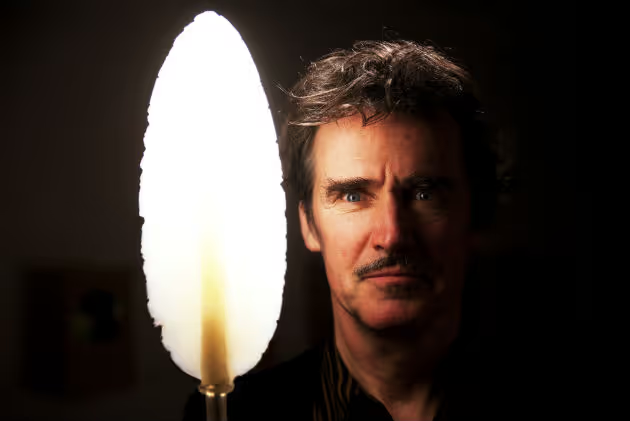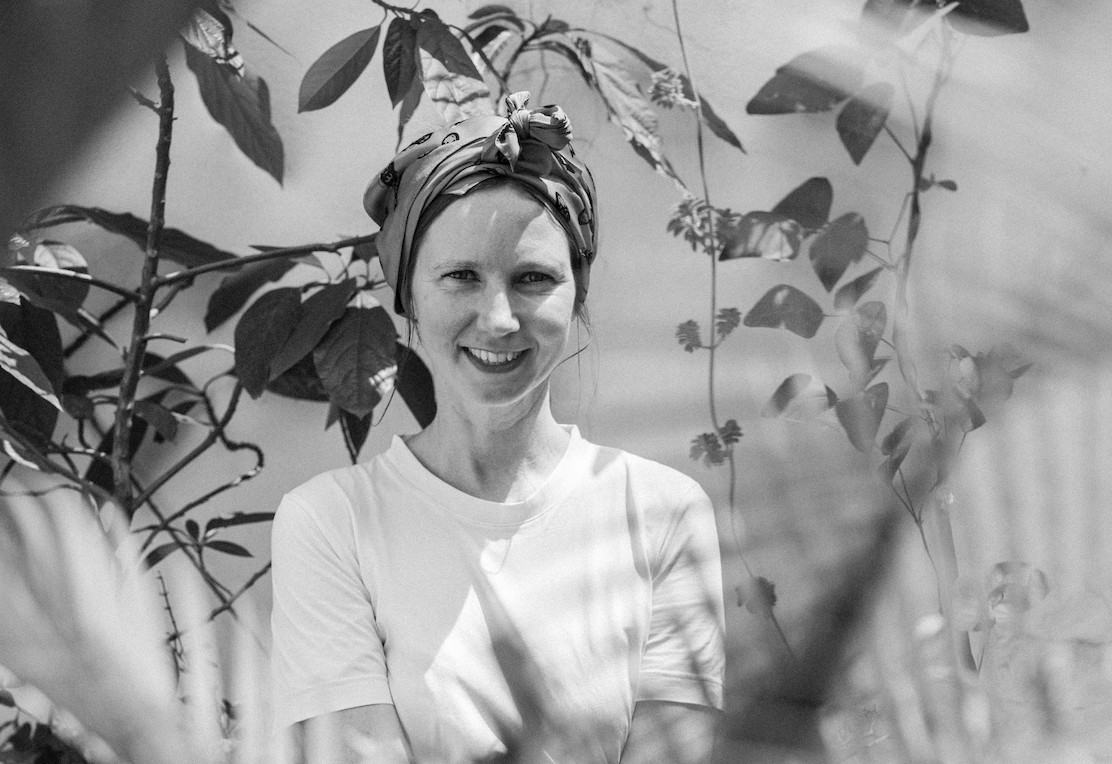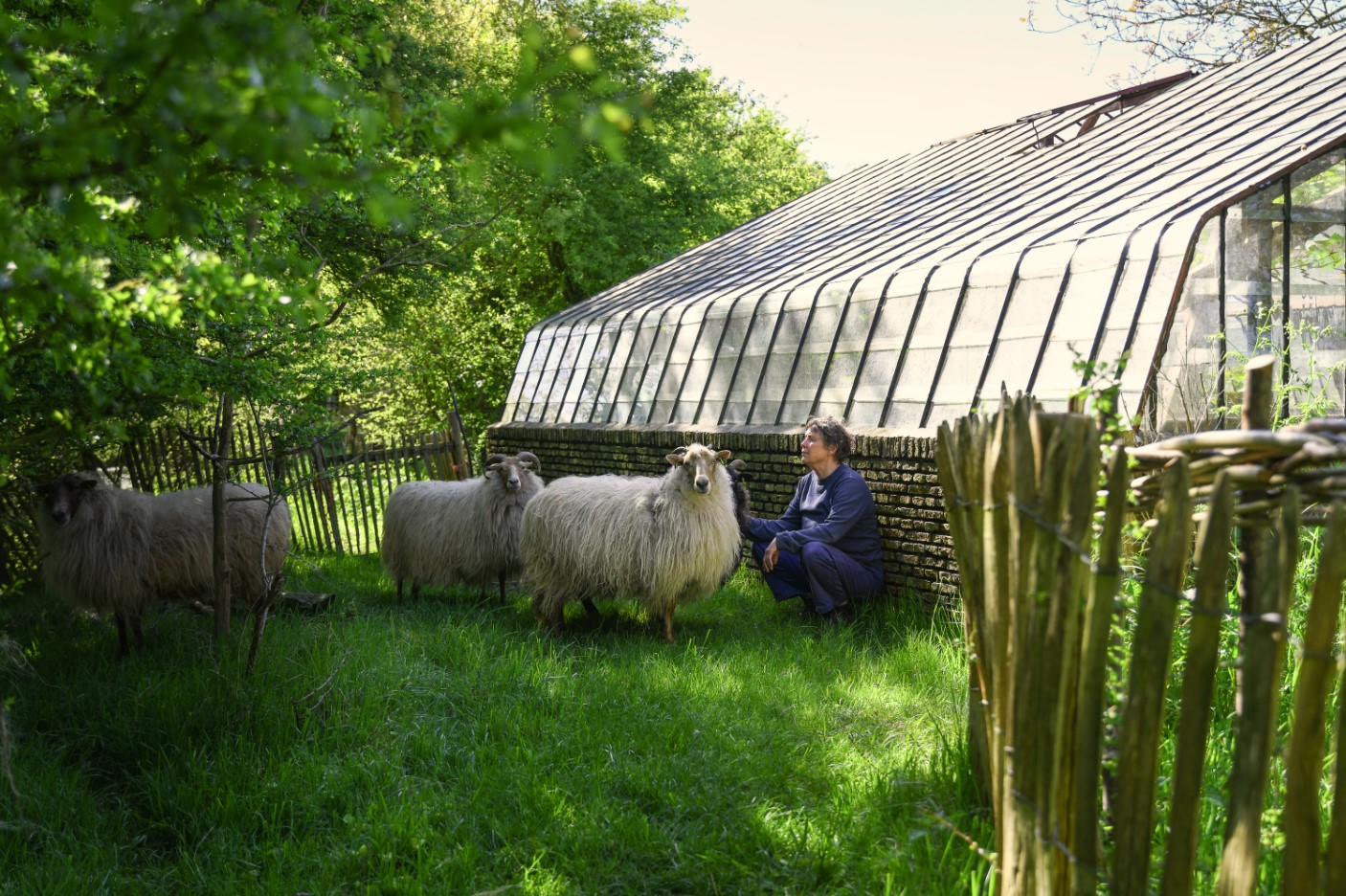► českou verzi článku najdete zde
At Kuzebauch Gallery, you exhibit objects you had never shown anywhere else. What happened before that?
I decided to show installations in lit boxes with lenses, formerly I placed my algae heads there. I made these new boxes exclusively for the Kuzebauch Gallery since I´ve been cooperating with Happy Materials for years. I am also a patron to matériO, a library of materials. I enjoy that – get all benefits from that and hardly any obligations.
How would you describe the exhibition?
It is a collection of weird materials and objects – dioramas. I have never made them this small and enclosed. You have to look at them through a magnifying lens. It makes it perfectly big plus it is all lit. I have ten small installations there, really fragile objects.
How was it to work on so small installations?
One wouldn´t guess how demanding it was. Pretty had work to lift the box umpteen times to look at the lens – does it work properly – or the lighting. Finally, I had to secure all the elements to be able to transport the objects safely. I was fiddling with it extensively. It makes me happy to see materials and items form into the final artefact. I can sit back and erase them from my inner list of items, which regularly cause me headaches and keep attacking me to treat them, shape them, form them. What a satisfaction when the job is over…
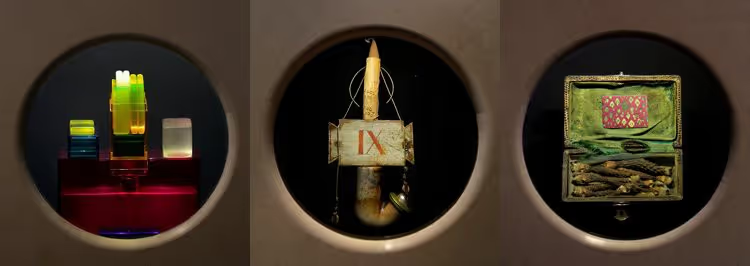
How do you get hold of various itmes and materials? Do you collect whatever you see useful?
I try not to collect much. I´d rather have things come to me. In dioramas, I used original stuff which I gathered in Brussels last year. I was there on a week-long residential stay and I kept going to the flea market everyday just as it was about to close. Street sweepers busied themselves with their brooms around lots of tiny things, stuff left behind or remains of various materials which had dropped off. On top of it, in one art store I found something I had never seen before and most probably will never see again. I was fascinated and bought everything they had in that jewellery display case.
What was it?
Colourful spines of a strange kind of sea urchin. Amazing colour palette from violet to green. They are so thick, you wouldn´t think it´s urchin. A great thing for this small installation.
You said that things come to you. Is this the case, the sea urchin?
Yes, they got me. I´ve done lots of things in my life, seen it, been there , but when I saw these spines, I bursted out in happiness! I saw more of them, but those were not as nice. Usually the first thing you see it the best representative of its kind. I leave it as it is. I want to be taken by surprise, I do not want to waste that thrill.
Do you thing that as we are growing older, the chances for being taken by surprise get limited?
By all means. The other day I gave an interview on TV and they brought me a pine cone. All I said – OK, thanks for that, I´ve got about ten of them at home already. It is hard to take me by surprise, but it can still happen .
Can it be given by the environment in which we live?
For sure. If I went to Africa, I would be thrilled about all that stuff I had never seen or experienced before. A friend of mine smuggled an elephant joint for me. I took a glimpse of it and I felt full of adrenalin, I knew exactly, what it was. People have difficulties recognizing materials, but I have trained myself to it. Sometimes I find it difficult to tell various types of plastic materials from one another or to name all these new material, but I enjoy it.
What do you like to wear?
I wear what I fell like wearing. This is one of my favourite shirts, but it is not cotton. It is elastic and comfortable to wear. Sometimes I freak out about really high quality shoes, but have no energy to go search for them. On the other hand, if I manage to find shoes I really like, I put them on in the store and never take them off. But this rarely ever happens to me, I am quite demanding in this respect.
Back to your shirt. Here, at your Zři ke kořeni exhibition, you use other materials but purely natural ones. Plastics are quite well represented here.
Recently, I have been working with pieces of Sustamid, a construction plastic material, which I managed to get with the help of Happy Materials. It is made in a factory at Planá nad Lužnicí. We used it for bar tables, low tables and chairs for Akropole bar here in Prague. It is an amazing material, I love it dearly.
Why?
I love slightly transparent materials. They are easy to backlit and they glow. Sustamid is hard, a bit fragile and slightly elastic. It´s very hard to finish, I´ve been working on it with an axe, similar to stones, or I make it into flints. In the Gallery, you´ll find one of them - it looks like a spear – exhibited by the window.

Opening of Zři ke kořeni exhibition at Kuzebauch Gallery
Where do you see the beauty of industrial materials once they miss the refinement and poetics of natural materials?
Some materials age with grace, some don´t. Polyester and polypropylene are somehow greasy and their aging is not nice and scratches tend to get dirty. On the other hand, Sustamid is hard and you can polish it perfectly and the final result will remind you of ivory or bones. He haptic feeling is pleasant and the material itself feels warm. I like touching it. The bar at Akropole invites you to stand there, especially with the glow of it.
All plastics are not the same...
I´m after materials, plastic and others, which look organic. Sustamid looks a bit like fat or lard. Once a friend of mine gave me a strange kind of rubber, which he found in a factory. He wanted to use it for it was elastic. I was thrilled about it, it was yellowish, semi-transparent and its inner structure was almost organic. I made it into pretty demanding objects, which, in some ten years, almost fell apart. It was badly processed and lacked UV protection. Light made it first go black and then break in pieces.
But one has to be prepared for that if you use natural materials…
Yes, but I don´t like it.
Have you ever considered making or mixing materials yourself?
It´s pretty crazy. I wouldn´t go into plastics. Some time ago, however, I made a set of jewellery from softened PVC. I had various tubes which I thermoformed. It gave poisonous vapours and I had to protect myself with a respirator. Bur apart from that, I enjoyed it, it was like working with glass. When heated, it gained beautiful, amber like colour. I fired various things in it.
It sounds close to DIY in materials.
If you enjoy it and know what you´re doing, you will develop the necessary skills and expertise. You are learning a new trade, maybe a completely unheard of one, nobody has a clue of. It comes without saying that you will get somewhere, get better in this. At a certain phase, however, you may hit some limits which you won´t get over.
For example?
I think, that the algae heads which I busied myself with in the past twenty years or so, couldn´t be taken forward. All depends on the processing or manufacturing technology. All you get to is a small head that may look like a real one. But I do not strive to be this realistic. In Břevnov, I exhibited one head made from pommelo (pamplemousse). I´ve made about six of them already, but it takes time, one has to dry them slowly.
How does it sell given the fact that chances that it will go bad one day are quite high…
You know what? One guy has been waiting for these heads for a year already. He wants them for his gallery. But I will let them go only when I´m happy with them. These items, by the way, are durable. Inside, I use liquid polyurethane to prevent moisture from damaging the structure. The surface is sprayed with some kind of insect protection, since it comes without saying that in the organic world each material has its liquidator. You have fungi out there or insects that will happily eat the whole thing. I had some issues with them devouring my objects made from bread, but those can be made again.
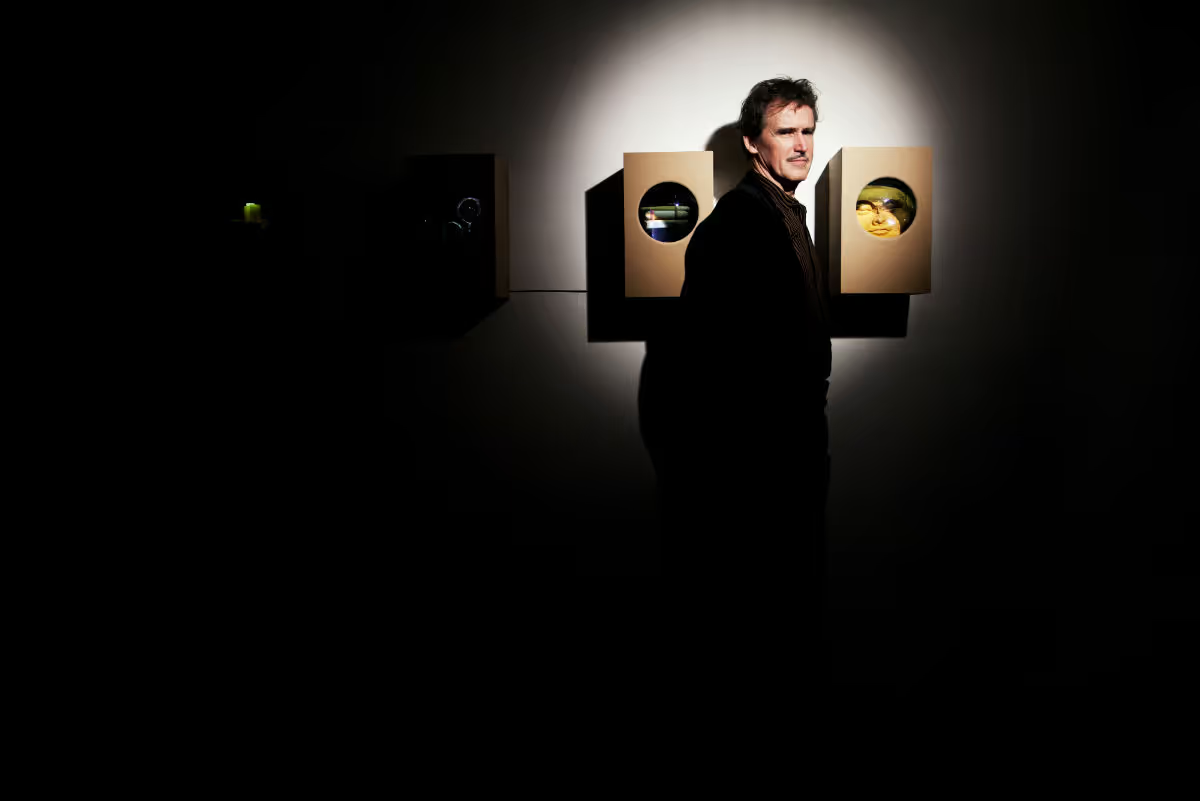
Do you prefer smaller things over larger objects? I saw your large object, a couple of meters high, reaching for the skies in the garden next to the Kuzebauch gallery.
I make no difference there. Small objects differ from the large ones, but all are equal to me. I like complex objects, from architecture to the tiniest stuff, something like Gesamtkunstwerk.
You´ve been sort of doing that, isn´t that right?
Nothing happens without context. Photos I´ve made often picture installations in my studio. I take pictures in the course of my work to capture nice moments which I know will pass. When working on a transparent object, I capture sunlight at a special moment and the image may be finally better than the final installation.
When looking into the exhibited boxes, they seemed to me full of dust. Is that possible?
It is not dust. It is patina to evoke age. I appreciate objects with patina, I take them as if they were made from gold. At the exhibition, I have one metal sign, it´s got wonderful, almost irresistible patina. It is hard to find wood, boards or planks with authentic patina, they are rare. Artificial patina is not it.
These things are precious because of their age.
Unfortunately, things with beautiful patina are rarer and rarer. Some new objects will never develop patina. Some new materials do not age with grace, contemporary architecture and design ask for standard materials, flawless and uniform. There are people who have wooden doors made asking for knot-free surface, it seems they want them look like plastic. It´s the most stupid thing to do since knots make wooden doors look beautiful.
